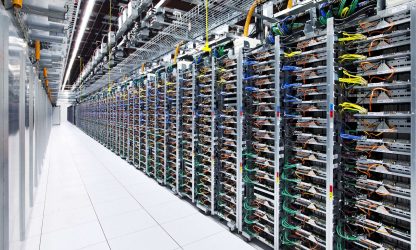 Cloud computing has ushered in a dizzying spectrum of changes for most businesses and data centers. Many of these changes are positive: the cloud promises to reduce overhead expenses, assign resources more efficiently, and streamline operations. As cloud adoption grows, though, more questions arise about how to make a data center not only more efficient but also better able to handle required capacities.
Cloud computing has ushered in a dizzying spectrum of changes for most businesses and data centers. Many of these changes are positive: the cloud promises to reduce overhead expenses, assign resources more efficiently, and streamline operations. As cloud adoption grows, though, more questions arise about how to make a data center not only more efficient but also better able to handle required capacities.
Today, there are more users and more applications in the cloud than ever before, and those numbers are expected to continue growing. Looking ahead, data centers must be created and modified with an awareness of the capacities that they can handle—and handle well—especially when the necessary resources may be expensive or scarce. Thorough planning for data centers isn’t an option; it’s an absolute necessity.
Planning for Capacity
The basic premise of capacity planning is simple enough: ensure that a business has ample resources to handle any and every project when it reaches its projected peak. Decision makers need to understand what resources are required, when they will be used, and which ones are critical.
This may seem like a huge undertaking, and it is. The peril is that decision makers might approach capacity planning as a guessing game and simply hope for the best. The best approach, though, is to use the science of data center capacity planning to make these decisions. This means using data and metrics to determine reasonable amounts of key resources that will be required for projects and to create a realistic and workable strategy.
The Data-Driven Approach
A smarter approach requires gathering data and making decisions based on those numbers. Technology managers should gather information from all teams and record the projects that they are working on, what they will be working on, the number of projects that they typically work on, the resources they use, and when they use them. Meanwhile, the IT team should provide managers with performance metrics about data usage during peak and off-peak times. They also need to determine when the heaviest and most frequent usage occurs.
If the numbers indicate that certain resources are too busy or are on the verge of becoming overloaded at critical times, businesses can plan accordingly. They can move those resources or applications to faster machines, or they can divide the work across two or more machines to relieve the pressure.
In addition, metrics should not be reviewed only for one or two days or projects; they should be reviewed across different types of projects and timelines to get the best and the most clear picture of past and future capacity needs. Such strategies will work in the short-term and also can be applied to longer-term infrastructure changes as the business grows and as demand on its resources concurrently increases.
Capacity planning doesn’t have to rely on guesswork. Science relies on numbers and data and so can a capacity planning framework. Calculate planning and stability with resource allocation and budgetary requirements so that any data center strategy is one that will lead to both organizational success and client satisfaction.
Although no single department or decision maker can account for every scenario, all can plan for many plausible scenarios. Smart capacity planning ensures that will happen.



